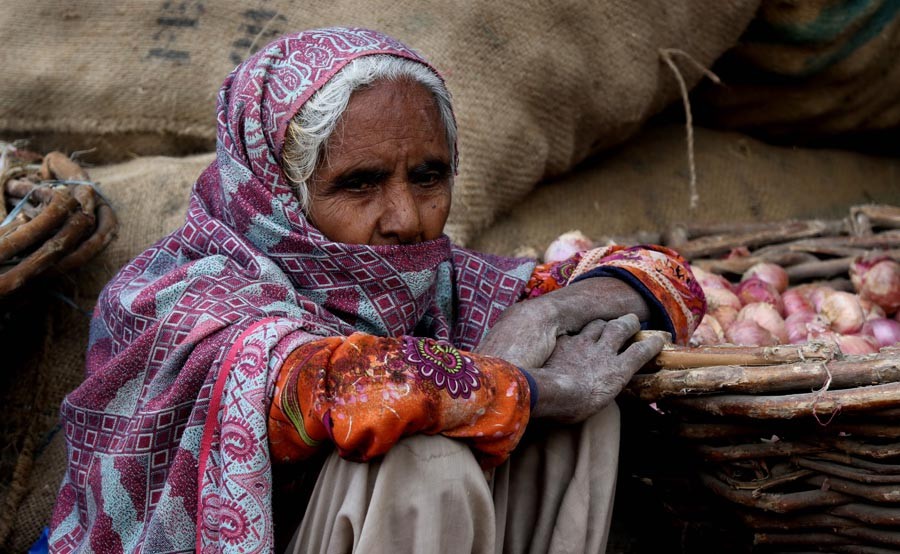
A lot of work that women do in Pakistan remains unrecognised and uncounted

We use the word ‘right’ a lot, but it is a haloed and distant term. In many languages it invokes truth -- an aura of goodness and an assuring feeling of timelessness. A nation has the right to self-determination, an individual has the right to her or his conscience, and a child has the right to education.
A nation can be hundreds or thousands of years old, and might have always had the right to self-determination, but it can practice self-determination once it is recognised by other nations. Ask any Palestinian. The individual’s right to conscience might have existed since before the day Socrates drank poisoned hemlock, but it can be practised when other individuals and the legal and political systems recognise that a person cannot be punished for their beliefs alone. The child always had the right to be educated but will actually be schooled when the community recognises this right and provides the necessary resources.
Recognition, therefore, is the more accessible fellow-traveller of right. It is not only the way in which rights are realised, but is also a step towards making rights enforceable.
Pakistan is known as a country where relatively few women work. According to the World Bank, only a quarter of the females aged 15 years or above work in Pakistan. Most of the countries that have similar rates are in the Middle East and North Africa region.
It has been easy to explain away these low female labour force participation rates by saying that women’s work is discouraged in conservative societies, many of which happen to follow the Muslim faith. This might be true, but research that I have been involved with in the last few years also suggests something else.
A lot of the work that women do in Pakistan remains unrecognised and uncounted. The Labour Force Survey finds that three-quarters of the women who are reported as working in Pakistan are in the agricultural sector. But our research suggests that women’s work is undercounted even in agriculture.
The agricultural economy of our country has become increasingly specialised over the decades. There are specific tasks associated with each crop and with the rearing of livestock, and many of these tasks are undertaken by hired help. Some tasks such as grain harvesting, weeding, and caring for livestock rely largely on women’s work, and others such as cotton-picking and vegetable harvesting are done almost exclusively by women.
Food consumption in Pakistan is dominated by wheat and dairy, and women play a major part in both these products, particularly the latter. The textile sector dominates our industrial output and exports and relies, in turn, on the cotton crop. In the cotton-growing districts of Punjab and Sindh, women work long hours for very low wages over several months. Mothers tell us that they are unable to find the time during the cotton season to feed their infants. Nobody asks if these women get to see any of the benefits of public investments and subsidies which are mostly directed at large farmers, mill-owners and corporations.
Despite improvements, national statistics continue to ignore a number of agricultural tasks, such as caring for livestock that are almost exclusively undertaken by women. The women who do get counted as workers are recorded as ‘unpaid family help’.
In our field surveys, we find that while some tasks such as cotton-picking and vegetable harvesting are recognised as work, others such as taking part in the wheat harvest or looking after livestock, are seen as extensions of domestic activities -- ‘what women do’. Feminists in many countries use the term ‘reproductive labour’ to make more visible tasks such as cooking, cleaning and other care-giving which are often done by women and do not get recognised as work. In Pakistan, there is much to do to make ‘productive labour’ more visible.
Social conservatism might be one possible explanation for low female labour participation rates in Pakistan and other similar countries. But evidence suggests that at least part of the problem of low reported participation rates is non-recognition and undercounting. In other words, social mores might inhibit women from entering the world of productive work, but they also make the work that they do less visible.
The presence but invisibility of women’s work has many beneficiaries. There are employers, landlords, and labour contractors who get away with paying low wages; men who rule their families on the strength of a false male breadwinner model; stakeholders in sectors such as grains, dairy, vegetables and textiles who can keep costs down and profits up; and the state which has a low wage workforce whose compliance can be outsourced to family and community.
Feminists have built solid critiques of post-industrial societies which still rely on unpaid reproductive labour extracted through the prevalence of patriarchal ideas around the provision of care. In Pakistan and other similar countries, social conservatism is added to the mix to reduce options for women, and to extract underpaid or unpaid productive labour on the pretext of cultural norms around ‘what women do’.
Because of its association with food production and acquisition, agriculture is seen as an extension of the kitchen. Yet in reality it is a specialised sector with global and national players. Recognition of women’s agriculture work can be a step towards the realisation of women’s rights as workers not only in agriculture but in other sectors.
The author works with the Collective for Social Science Research. The research referred to in this article was conducted as part of the UKAid-supported Leveraging Agriculture for Nutrition in South Asia (LANSA) programme.